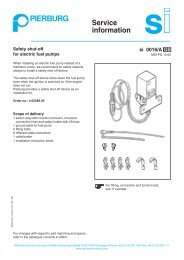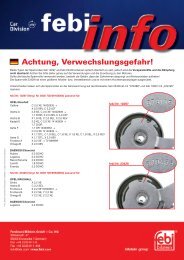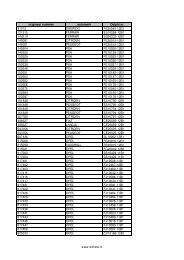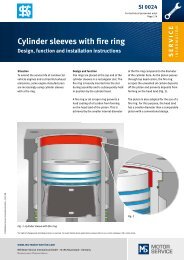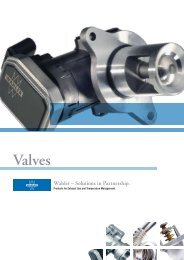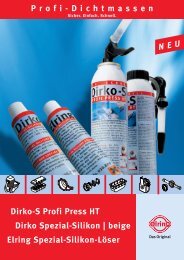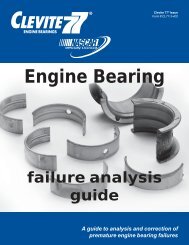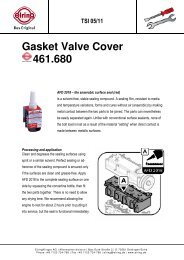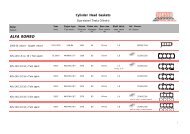APPLICATION GUIDE
APPLICATION GUIDE
APPLICATION GUIDE
You also want an ePaper? Increase the reach of your titles
YUMPU automatically turns print PDFs into web optimized ePapers that Google loves.
CRANKSHAFT DAMPERCONSTRUCTIONMETALLURGYSTREETOEM Style dampers are usually manufactured from castiron. Not all cast iron is created equal and to save costsome aftermarket balancers use regular “grey” cast ironwhich has limited strength and is prone to cracking.All POWERBOND STREET series dampers aremanufactured exclusively from high strength S.G. iron(also known as nodular iron) which is the same materialused in most crankshafts. This high-grade iron has muchgreater resistance to cracking than the cheaper grey iron.there is effectively no other force holding the componentstogether other than interference fit.PRESSURE BONDING – The most time consuming andsecure method of damper assembly used by prestige andperformance carmakers such as Mercedes Benz, BMW andPorsche. Damper components are chemically primed andassembled in highly accurate pre-heated steel press dies.Specifically formulated rubber is injected into purposebuilt 100 ton bonding presses and cured in the moulduntil uptimum strength is achieved. This method givesunrivalled rubber to metal bonding strength, resistance toring dislocation and control of rubber duro or elasticity. AllPOWERBOND dampers are assembled using state of theart pressure bonding methods.RACEPOWERBOND RACE dampers are manufactured fromsolid billet steel bar stock to AUS 1045 specification.Steel is stronger and more wear resistant than aluminiumalloy used in some products. Wear resistance is critical inthe oil seal and crank nose areas.Whilst alloy is a lighter base material careful design ofthe damper can minimize the weight variance when usingthe stronger steel base material.DAMPENING MATERIALAll POWERBOND dampers use a rubber formula thathas been developed over 23 years in the damper business.The formula is exceptionally resistant to ageing and givesexcellent control of elasticity in the pressure bondingprocess employed.BALANCEAssembly of dampers can result in severe run outconditions and eccentricity of rings and centres. Onecrude method of correcting this problem is to machine thebalancer all over after assembly but this only disguises anymisalignment in the rubber and ring.POWERBOND dampers are assembled with extremelyaccurate tooling making post press machining unnecessaryand every balancer is dynamically balanced at the factoryfor total peace of mind.All counterweighted POWERBOND RACE dampershave milled counterweights as close to factory balancespecifications as possible. Integral counterweights aremore secure than bolt in alternatives used by somemanufacturers.ASSEMBLYIn most dampers, pre extruded strip or o-rings areused as the dampening material, which is assembledusing various methods that resist inertia ring dislocationwith varying degrees of success. Common assemblymethods include straight press insertion with or withoutmetal knurling to assist rubber to metal grip and “coldbonding” IE glueing the rubber in. Curing of the adhesiveis sometimes accelerated by “Post press vulcanisation”similar to cooking the rubber and adhesive in an oven.These methods generally have limited bond strength andresistance to spinning under high torque forces. The actionof the inertia ring can also degrade the rubber metalcontact particularly when the metal surfaces are knurled.SFI ring retention devices such as retaining lips andcirclips are critical for safety using these methods as




